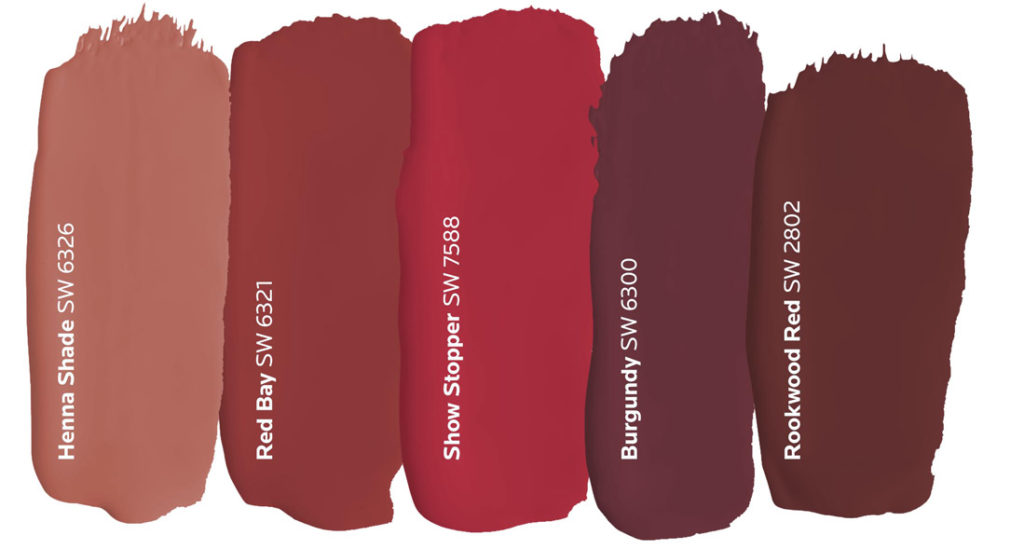

- #Paint it red goes faster skin
- #Paint it red goes faster plus
- #Paint it red goes faster professional
Perhaps the most studied effect concerns the shade’s association with desire, seduction, and sin – a link that can be seen in everything from the Scarlet Whore of Babylon to Chris de Burgh’s Lady in Red. Some fashion experts suggest red ties project authority and dominance in the workplace, as BBC Capital explained this week.
#Paint it red goes faster plus
On the plus side, red clothes might also help you to perform better in an interview. Playing with red poker chips seem to make people bet more than those using blue or white tiles, perhaps because they seem like the chips of winners. “Simply changing colours changed the way experienced referees were scoring bouts,” Hill says – whoever was wearing red won the referee’s favour.Īway from the sports hall, similar thought processes could lead to your downfall in a casino.
#Paint it red goes faster professional
Alternatively, it might have been down to the referees one German team manipulated videos to change the kits of tae kwon do players before showing them to professional referees. “If you see red you’ll feel fear and your lower status, and your testosterone will drop,” says Elliot. Or the red might intimidate the competitor – in the same way that less dominant mandrills may avoid approaching their leaders with crimson faces. Elliot points to studies showing that people who wear red feel more dominant themselves, triggering an increased heart rate and testosterone boost that could improve their performance. The exact reason for these effects still remains a matter of debate. “That paper was really responsible for this resurgence in interest in colour and its possible effects,” says Andrew Elliot at the University of Rochester in New York State. Soon, colour psychology was a credible scientific field in its own right. “But it helps tip the balance between winning and losing when people are fairly evenly matched.” This first “study in scarlet” triggered a host of other experiments, finding similar results with football penalty shooters, for instance: they are less likely to score if the goalie is wearing red. “Simply wearing red doesn’t turn you into an excellent competitor,” says Hill. Tracking their progress throughout the games, Hill found that those assigned the red kits were about 5% more likely to win their bout than the blues.

Reading their competitors’ fitness therefore prevents the lower ranking monkeys to take on a fight they are sure to lose. Mandrill monkeys are perhaps the most famous example, with vivid markings on their face and bottom that signal their position in the group’s strict hierarchy the fitter, and more dominant an individual is, the redder he appears.
#Paint it red goes faster skin
Red skin – caused by blood pumping near the surface of the skin – is an important sign of dominance for many primates. That enhanced perception would then lend itself to new forms of social signalling. But as our early primate ancestors were adapting to life in the jungle, they evolved a new kind of cell in their retina that allowed them to pick out the bright, red fruit from the foliage. Many mammals, like dogs, fail to differentiate between red and green. There is no doubt that our perception of red coincides with one of the most important events in our evolutionary history. So what is it about the shades of ruby, crimson, and scarlet that makes them so potent? Wearing red can even change your physiology and balance of hormones and alter your performance in a football match. A new branch of science called “colour psychology” has found that red can have a profound influence on our mood, perceptions and actions. And those associations may not be coincidence. Today, shades of scarlet are linked with power, aggression, and sex – from the vermilion of the British Queen’s royal regalia to the gaudy neon of Amsterdam’s red–light district. But it is perhaps significant that they chose a rich, red ochre – the colour of our blood and a vivid reminder of life, and death. We can never know what was going through our ancestors’ minds, tens of thousands of years ago, when they first picked up natural crayons and began painting their bodies.


 0 kommentar(er)
0 kommentar(er)
